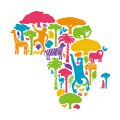 3-2. Out of forest area
3-2. Out of forest area 13. Long-rooted seedlings for afforestation in arid and semi-arid areas
1. Approach’s Outline and Features This approach involves accelerating afforestation in arid and semi-arid areas with long-rooted seedlings that would expand the available land areas for tree plantations. Their long roots could enhance the survival rate during the dry season and their drought tolerance is reportedly relatively higher than normal seedlings. Although the long-rooted seedlings technique remains in the experimental phase in Botswana, it is expected to be applicable as a means of enh...
